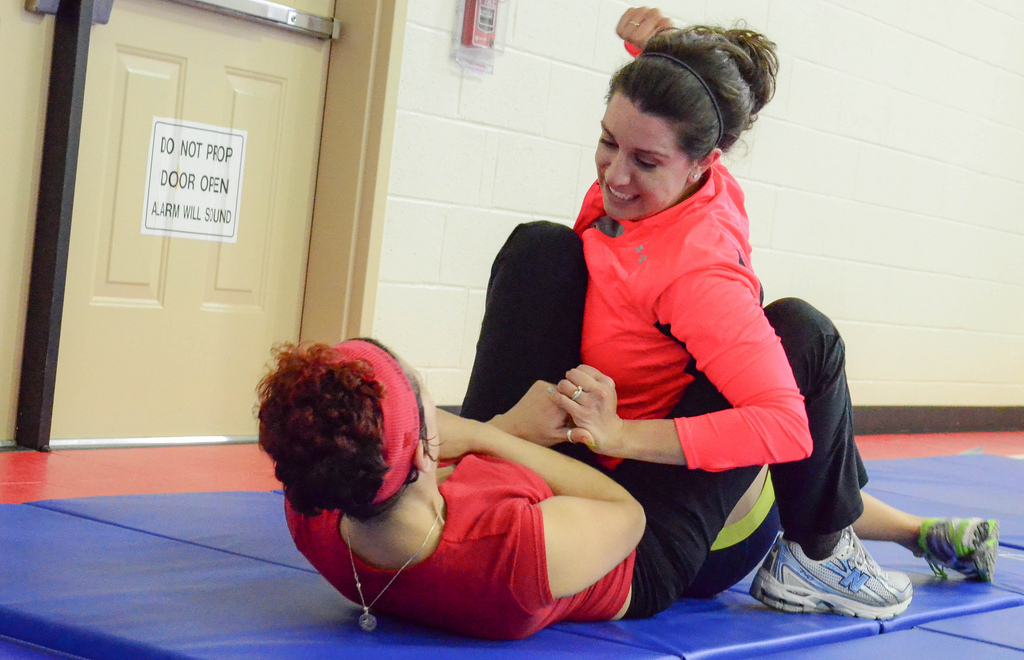It is estimated that the average American will see 200,000 images of violence in the media by the age of 18. Putting aside the moral implications of this, because that’s a whole other topic, there is another result these images will have on the viewer. Namely, they will have a completely unrealistic concept of fighting and self-defense. The vast majority of fights do not include spinning jump kicks, multiple opponents that wait their turn, or anything seen in any Jet Li movie ever. As entertaining as these fight scenes are, they don’t resemble reality and they can taint one’s approach to self-defense. I’m not trying to promote one fighting style over another, but to encourage practical training that could make the difference between life and death. Here are a few tips for how to approach training for self-defense.
Contact
Perhaps the biggest flaw in people’s self-defense training is that they somehow think that it is possible to train for a street fight without getting hit in their training. Nobody really likes to get hit, but if you plan on surviving an attack on the street, then you need to train hard and train realistically. Getting hit in training will give you the experience of fighting through pain, fighting while disorientated, and understanding that in all likelihood you will be hit over and over again even if you win the fight.
The Ground, The Ground, The Ground
Unlike in the movies, in real life, most fights go to the ground. Preparation for a real fight has to resemble a real fight. Learn how to control position on the ground, how to finish an opponent while on the ground, how to fight from your back, and how to stay calm while in a vulnerable position. If your first time fighting from the ground is when you are attacked on the street, good luck, you’re going to need it.
Spar
Contact in drills is great, but it’s not the same as sparing. Sparing gives you experience that drills never can. Experience like, reading your opponents hips and shoulders, trading blows in the pocket, transitioning, and pushing yourself through pain to get the win. Sparing is probably the most important part of any practical self-defense training. If you are not sparing you are not ready to defend yourself.
Like any skill set necessary for survival, self-defense requires putting in the time and effort to acquire those skills. Don’t get a false sense of security because you have taken a class, or “trained”, or gotten a belt. If you do not have realistic experience in your training, then you will be in for a shock when you attempt to use it. Train hard, because the person who might attack you has probably been in a fight before, you need that same experience.
If you enjoyed this, you might also like….



Remember that there is no such thing as a fair fight. Your opponent is either going to ‘kill you’ or try to come close to it. I suggest you continue to convince your opponent that fighting is ‘not going to solve anything and you don’t want to fight. Keep backing away. If there is no possible way to avoid the fight, a surprise attack from you can sometimes convince the aggressor that they have bitten off more than can handle. If your attack is intense and you get the aggressor to bleed, or better yet break a bone, your chances of walking away unharmed have just more than doubled.
I train folks in self defense and I appreciate your helpful tips not only here in this article but in general. I do however take exception with your emphasis on ground fighting. From my perspective and experience it is critical that a mid level trained or novice NEVER go to the ground. Emphasis being on avoiding going to the ground at all costs. Just as an FYI. Thx again and I enjoy reading your articles. Jp
I think you should train in all areas on your feet on the ground and with your weapon train and Spar and practice. Remember practice perfect makes perfect practice and in the field you want to be perfect to win.
At 62 and with COPD what kind of defense class should a woman consider?